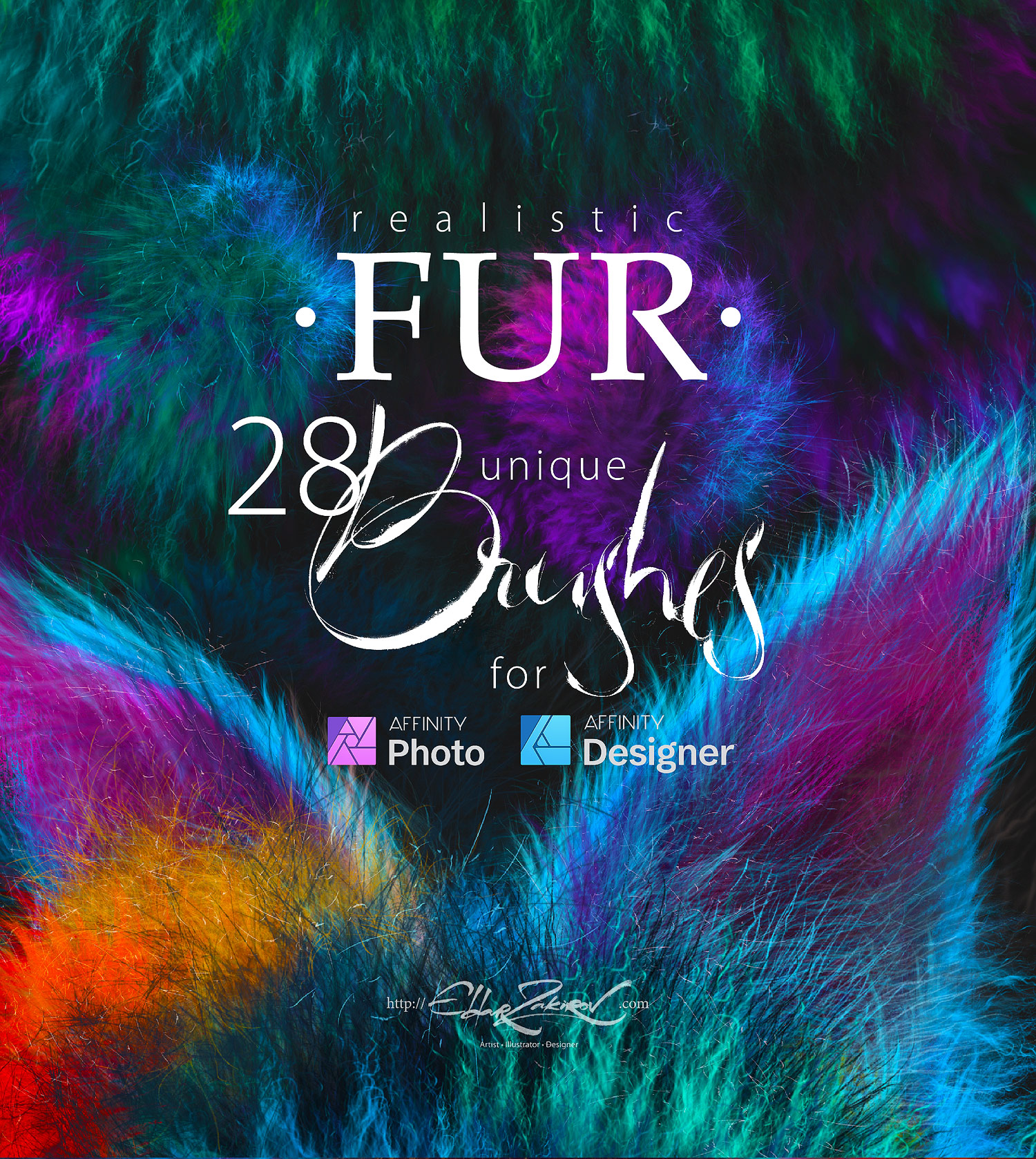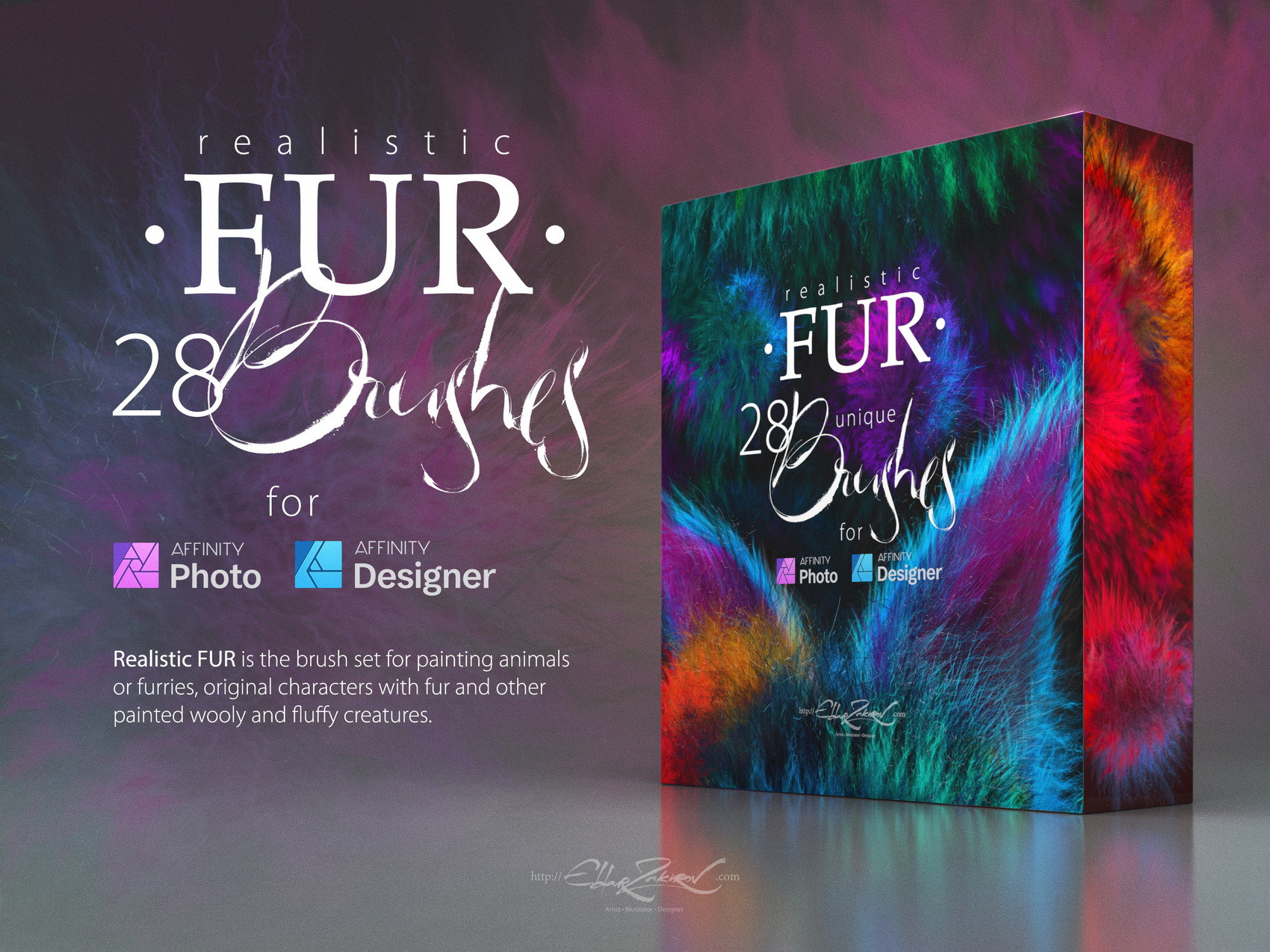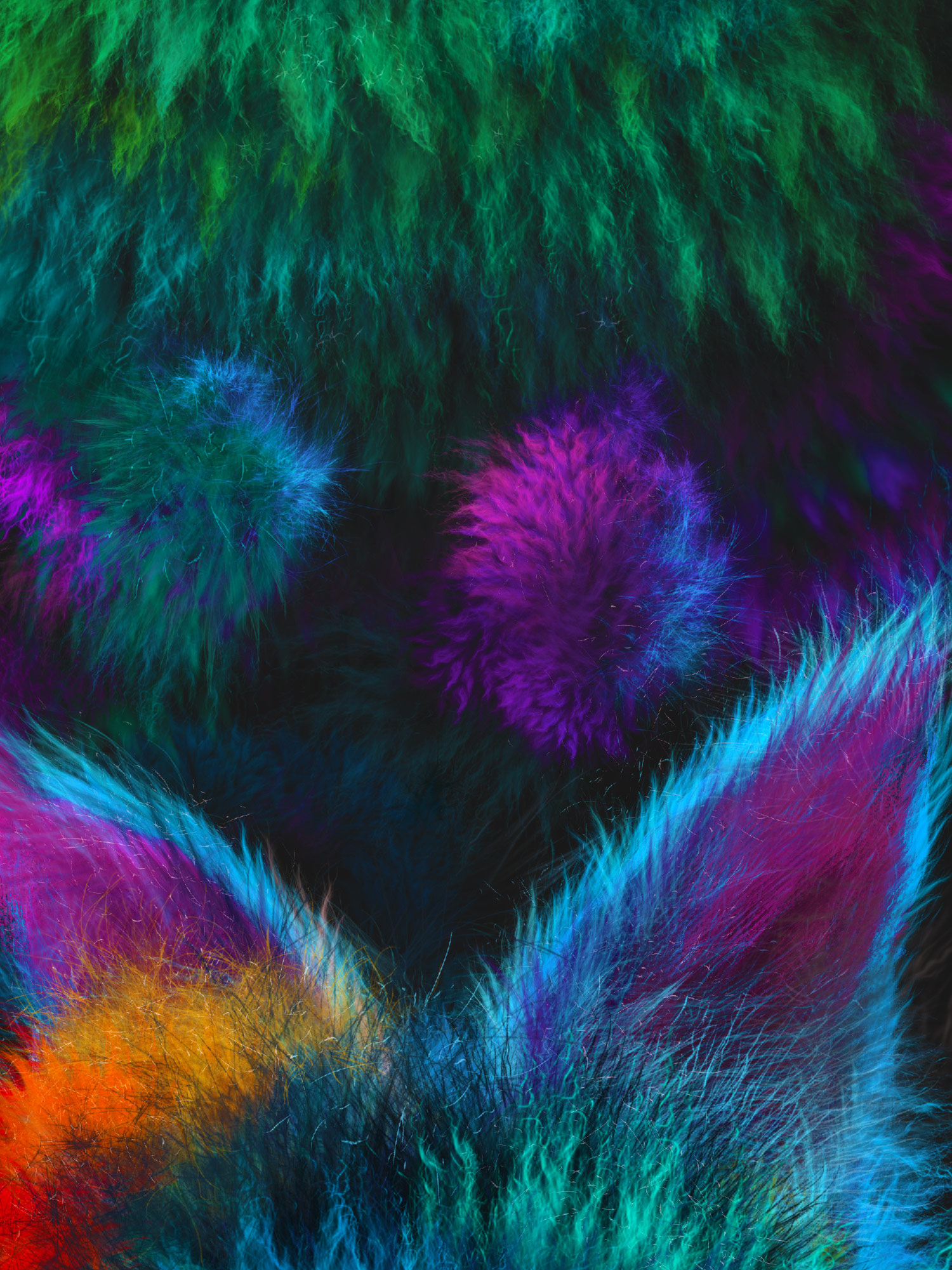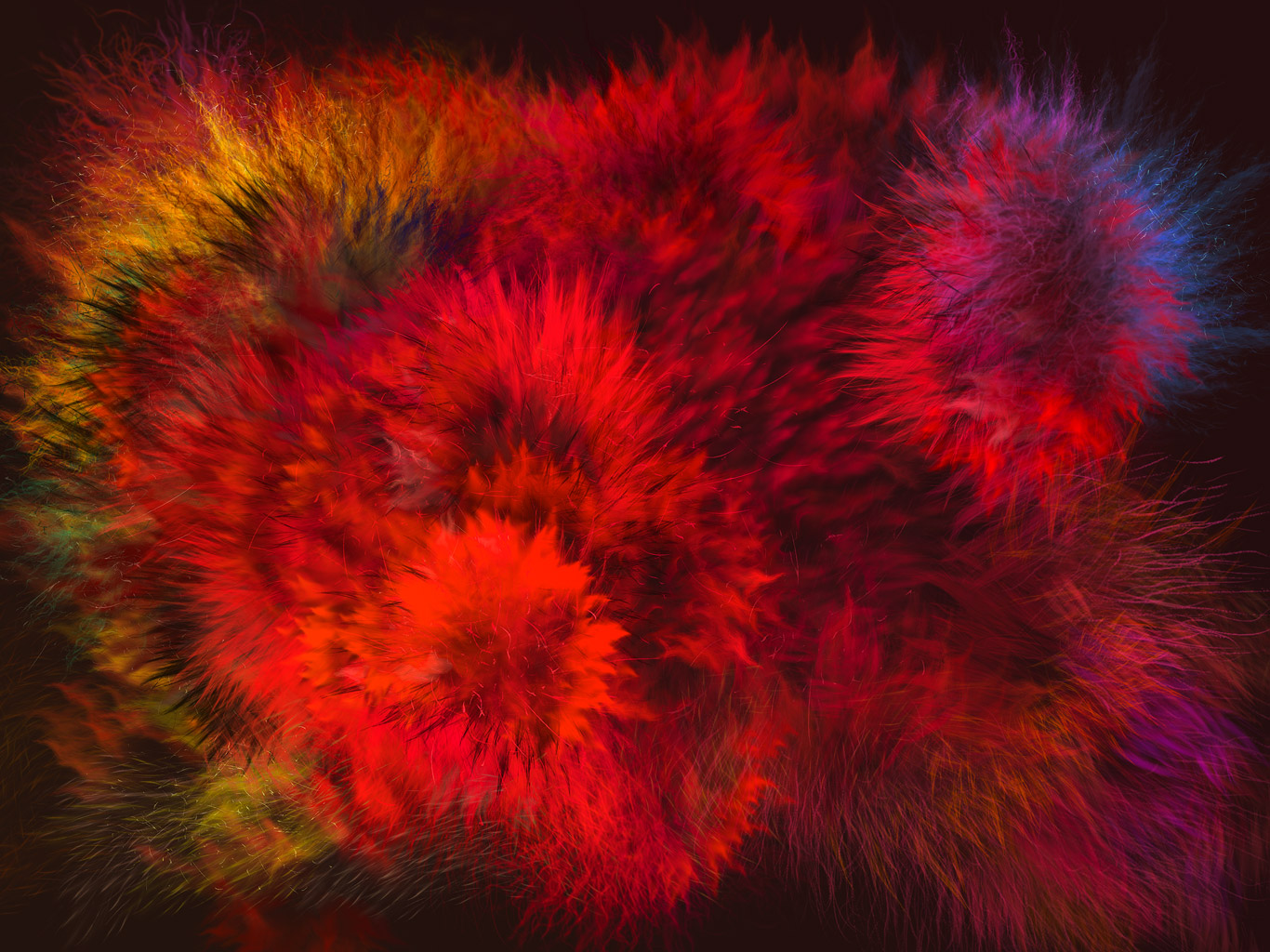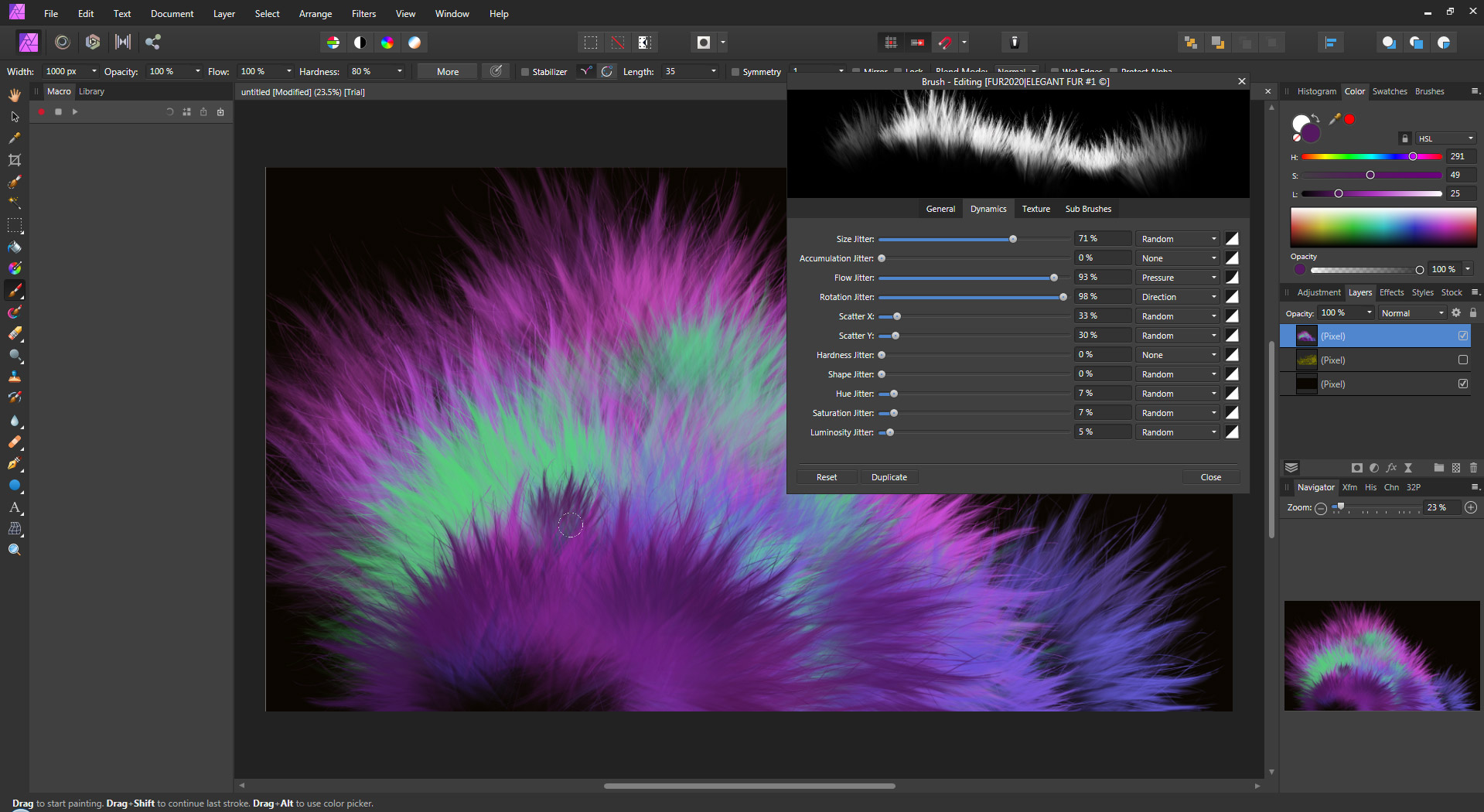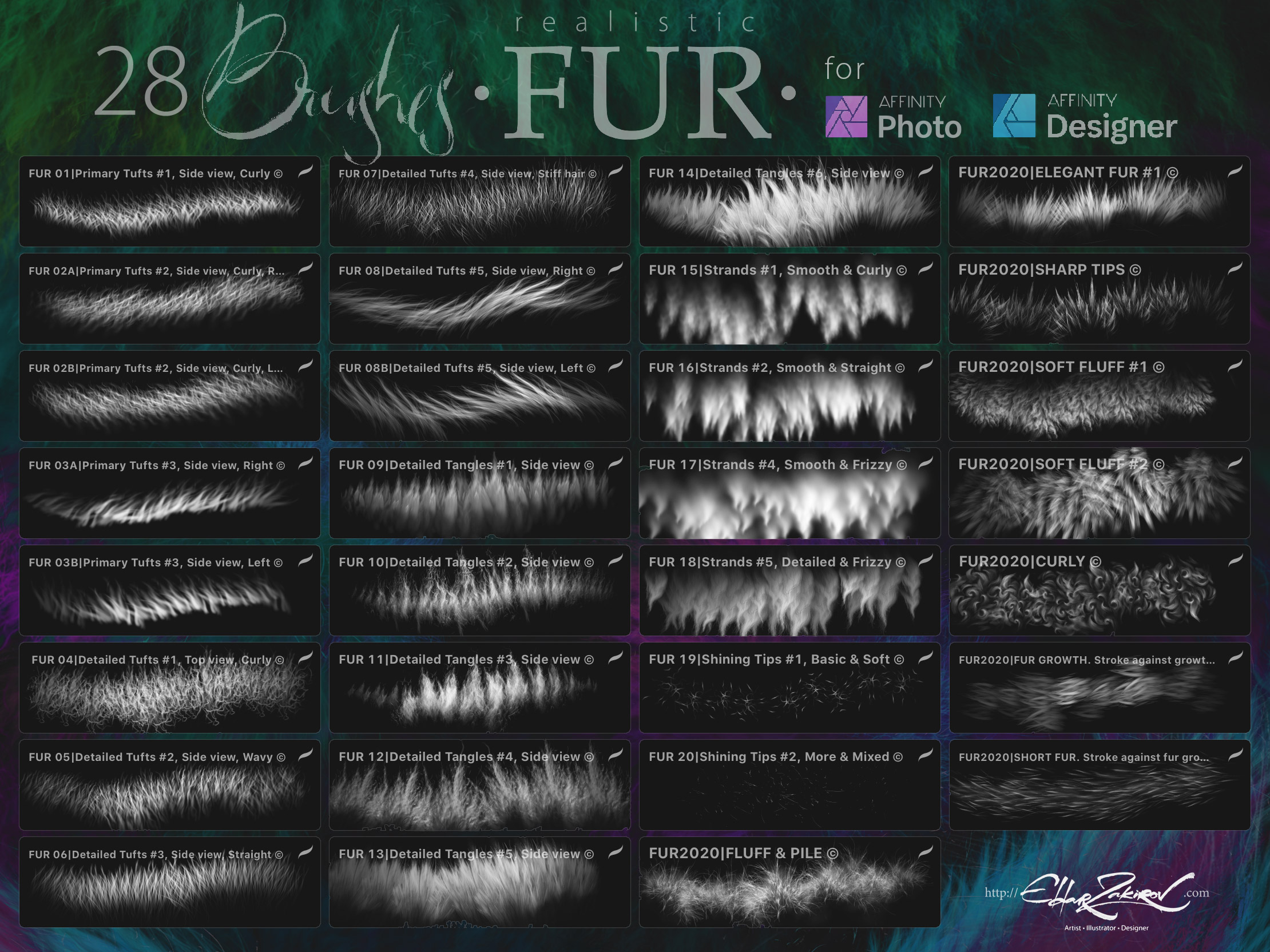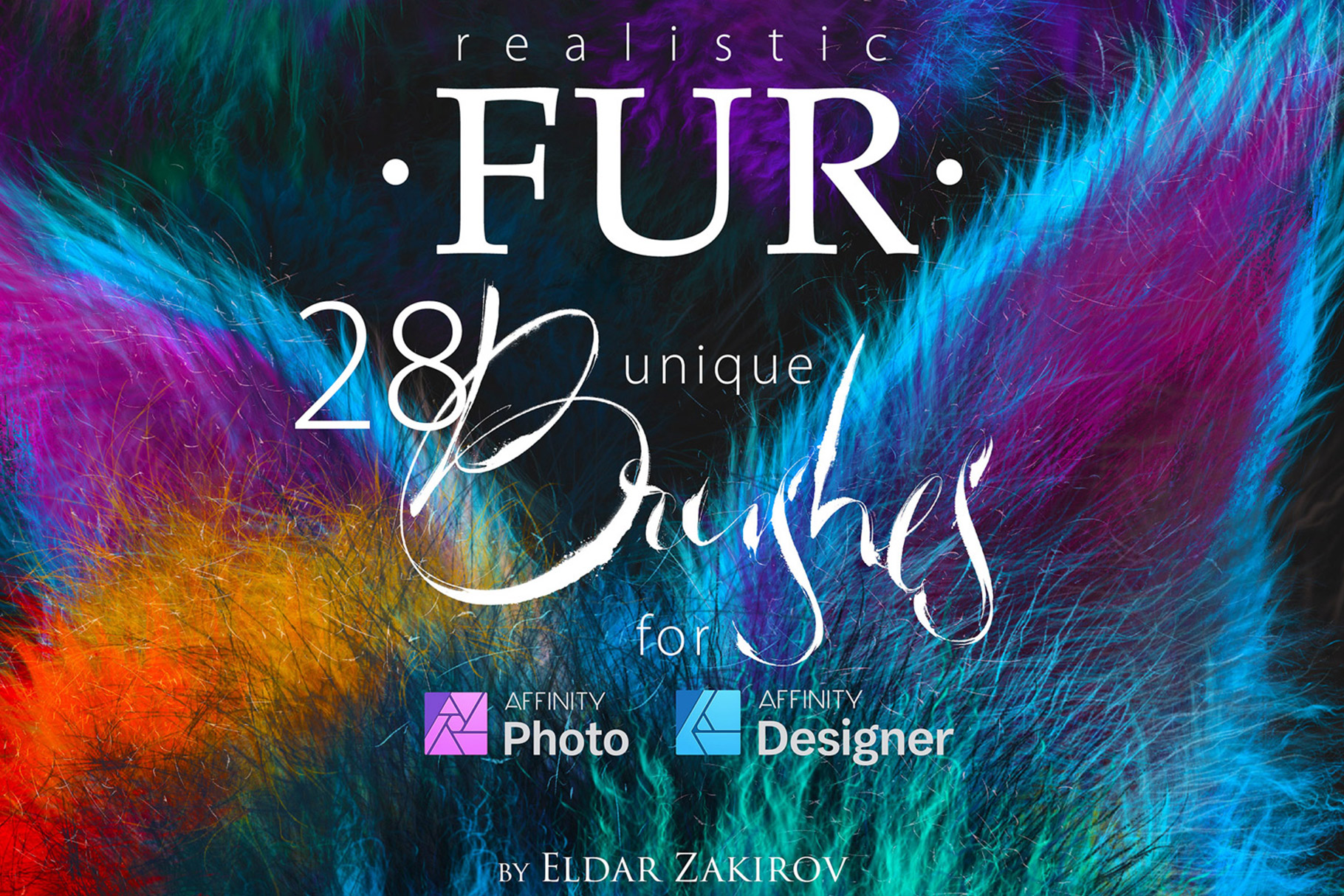
Realistic FUR Brushes for Affinity Photo & Designer
by Eldar Zakirovin Addons , Brush , Premium on April 7, 2024Choose Your Desired Option(s)
has been added to your cart
have been added to your cart!
28 Realistic FUR Brushes for Affinity Photo & Designer
— for desktop and iPad versions.
Realistic FUR is the realistic brush set for painting animals or furries, original characters with fur, and other painted wooly and fluffy creatures.
20+ brushes remastered from the ‘FUR’ brush sets for Photoshop and Clip Studio Paint + 8 new brushes.
Also, the brushes depicting fur from the side view (brushes # 2, 3, and 8) have two options: the direction of the left and right hair growth. Therefore, there are actually three more brushes in the set.
■
• What is this?
For some years, I’ve worked hard to learn how to quickly draw realistic fur for the artworks in my gallery. To simplify and speed up the process and increase the photorealistic level of my art, I created a series of brushes (initially for Photoshop). And I’m still satisfied and proud of the results.
I adapted them for several software products, including Affinity, and added eight new FUR brushes. These brushes allow the creation of high-quality realistic fur, and I’m sure you’ll appreciate the assistance they’ll bring you in your work!
■ Minimal versions where the brushes were tested:
Affinity Photo v. 1.8.2
Affinity Designer v. 1.7.0
■ You will receive:
- 1. 28+ FUR brushes saved in the “Realistic FUR by Eldar Zakirov.afbrushes” file;
- 2. Some useful tips and recommendations.pdf — the PDF file containing some tips regarding usage and installation. You can see them below. To have them on hand;
- 3. FUR-4-Affinity-Brush-List.jpg. This is the brush list image you see above (it’s sometimes convenient to have it).
■ Some useful tips and notes:
• How I’d advise painting furry volumes. As you know, there are several basic shading techniques in painting and drawing, and I like this one as the most appropriate for me — I find it one of the most rational for painting the fur — to start coloring with a neutral, halftone local color, then shade it according to the volume and lighting. Usually, this underpainting should be darker than fur, as it would be in the shadow. Then, add the layers above to add the fur. All the brushes have a little color and lightness jitter to make the fur more realistic.
• So, try to place basic shading with a simple brush you prefer to paint, usually hard or soft, and then put the fur strands above, according to the form and lighting.
• After it may be necessary to make some areas deeper (darker) — for example, shaded areas deeply among strands near their roots — or set some light and highlight accents in the lights.
• You can also experiment with layer’ and brush blending modes, such as Soft Light, Screen, Multiply, etc.
• As in painting or drawing, I’d recommend proceeding from common, main shapes to partial ones and details: first, specify the main big volume, lights, and darks, then put non-detailed fur strands using matching brushes and then make the detailing with detailed fur brushes.
• In the end, I’d add some of the sharpest strands or hairs, maybe blur or darken some of the underlying strands, and light up some of the most visible and highlighted ones. Try to make some of them softer or sharper, darker or lighter in the finish or work, a kind of post-processing. Add some highlights. Regular textured thin brushes can draw the separated hair.
• Brushes # 2, 3, and 8 each have two options for the direction of left and right hair growth.
Share Now!

